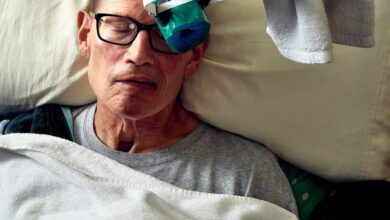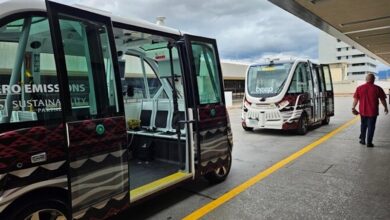How Intuitive DV5 data will drive innovation and improve outcomes
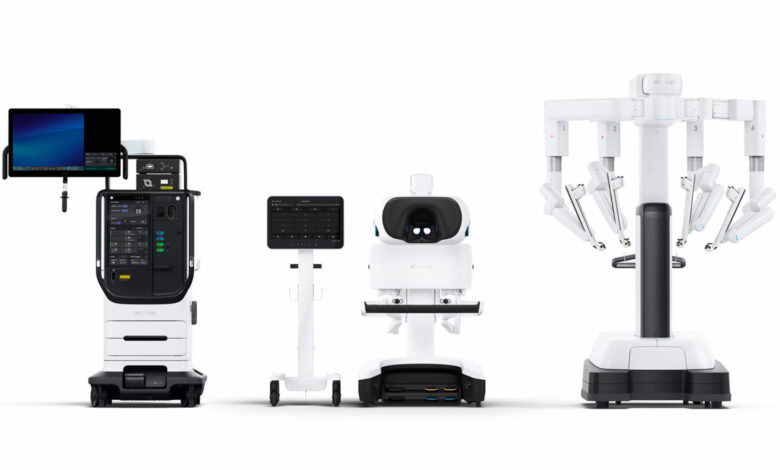
Intuitive Surgical’s da Vinci 5 is the device developer’s fifth-generation surgical robotics system. [Image courtesy of Intuitive Surgical]
Data collected by Intuitive Surgical’s new da Vinci 5 surgical robotics system is going to be “unbelievably transformational” for patient care, Intuitive EVP and Chief Digital Officer Brian Miller says.
In a keynote presentation at DeviceTalks Boston 2024, he said the fifth-generation DV5 is the most precise robot Intuitive has ever built.
“What I mean by that is the ability to calculate exactly where the tip of the robot is, is the highest precision that we’ve done. That involves higher resolution sensors, better motors. You will continue to see those advancements in the platform,” Miller said in response to a question from DeviceTalks Editorial Director Tom Salemi about the potential for future gains from hardware advances and data.
“But I do personally believe that the data that is coming from the robotic system and the ability to characterize that procedure — what happened, what technology did they use, how did they approach it — and you couple that with the outcome status at some hospitals, I think that it’s going to be an unbelievably transformational technology to be able to say how you approach patient care because oftentimes, it’s the approach that you need to find and there’s a lot of preoperative planning in place,” he continued.
Previously: The Intuitive da Vinci 5’s top design changes: ‘This is groundbreaking for robotic surgery’
How Intuitive thinks about robotic surgery insights
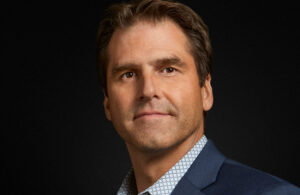
Intuitive Surgical EVP and Chief Digital Officer Brian Miller [Photo courtesy of Intuitive]
Miller said Intuitive is focusing on “data-driven insights that come from the robotic platform — as well as data that the hospital has — to really drive the next level of growth in innovation in the future.”
Intuitive can identify those insights through large volumes of data.
“In surgery, just like in other parts of our lives, you’ve got so much data you sometimes don’t even know what to do with it and you don’t know what data is important and what data is just noise,” he said. “As we look into how can we create insights that matter, we start to look at the signals that da Vinci can measure: … video, force, kinematics, insufflation, energy. And that becomes powerful to know what would occur during a procedure.”
There’s potential to couple that data with a hospital’s electronic medical record (EMR) and picture archiving and communication system (PACS) data to understand and characterize a patient before their surgery and the procedure’s outcomes.
“It starts to allow you to really understand what tool and technique is delivering the best outcome,” Miller said. “What that has done and what we’re doing right now is we are taking this set of data and we are using some algorithms and machine learning models … to really start understanding what are the measures of insights that we can then surface back to customers through My Intuitive.”
Applying surgical data for surgeon training and better outcomes
Already, Intuitive has found two helpful use cases for DV5 data: surgeon learning curves and outcome predictors.
“The ability to come in and take measurements from the system that allow you to differentiate between novices and experts … it’s the motion of the instruments, it’s the motion of the camera, and you can start to see that those signals show an economy of motion that lets you identify a novice versus an expert,” he said. “… That is one aspect that has fueled a lot of research and exploration, starting to really understand if you can diagnose what types of things are differentiation then you can start to help people improve those areas.”
With regards to predicting outcomes, many of the top outcome contributors for robotic surgeries can be measured with DV5 as signals like instrument motion or force, Miller said.
“If you take a procedure and you start to break it down into the individual steps, you can start to look at a key step for a particular procedure and you can see the signature of what good surgery looks like,” he said. “And that’s where we think this research is headed. It’s extremely early, but it is nice to see that you can see signal through the noise. Because ultimately, this is how you could get predictive of what is the right approach for a particular patient depending upon what their disease state and needs are.”
This relates back to surgeon learning and the ability to personalize training — and it all comes back to improving outcomes for patients.
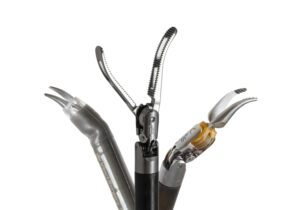
EndoWrist instruments for the fourth-generation da Vinci Xi surgical robot [Photo courtesy of Intuitive Surgical]
“We have found that there are certain best practices for what they call needle poses or needle gestures as you’re leveraging the EndoWrist instruments to perform a suturing task,” he said. “We have a set of best practices where you can record the procedure, you can compare it against those practices, and then you can take that information and pull it into a virtual reality environment where a surgeon can sit down and train and become more efficient.”
Miller sees data-powered technology on the horizon that further improve patient outcomes with surgical robotics.
“There is a significant opportunity for some of the clinical decision-making tools that that are starting to advance, and a lot of the information and signals that we’re getting around advanced imaging,” he said. “Being able to identify key structures, being able to highlight nerves, things where you’re giving the surgeon additional information along with all the other information they have, but giving them an opportunity to make better decisions.”
Partnering with Intuitive
Asked how he views relationships with external partners to solve problems and innovate, Miller said there’s “a right time for certain partnerships.”
“For how we view our approach to solving customer problems, we actually recognize the fact that they’ve got their own ecosystem inside the hospital, so there are aspects where we will want and need to partner with other companies to make sure that we can actually implement the necessary workflows.”
“In digital, we actually have many [partnerships], because we think it’s important to really focus on where we differentiate our solutions and then benefit from all of the great innovation that’s occurring out in other parts of the world,” he continued. “[For] some things we need to manage the experience, and other things we want to really partner and leverage some of the great work that’s going on.”
Look for more coverage from this keynote and DeviceTalks Boston 2024 at MassDevice and Medical Design & Outsourcing in the days and weeks ahead.
Related: 5 things that will shape surgical robotics over the next decade
